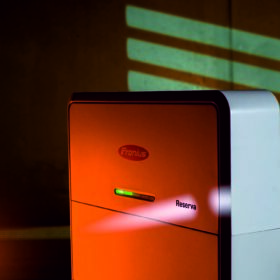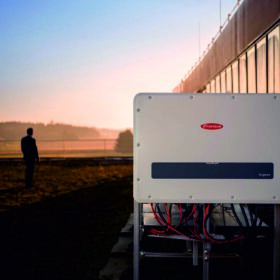The Hydrogen Stream: Just 17% of EU hydrogen projects likely on track
Westwood Global Energy Group says just 17% of the European Union’s hydrogen projects will advance without intervention, while Smartenergy says Spain’s Orange.bat project has cleared a key environmental hurdle and will launch in May 2028.
Vienna’s largest stadium completes solar array
Vienna’s Ernst Happel Stadium has completed the installation of a solar array capable of generating 3.8 GWh of energy annually, with full operation expected by the end of the year.
Austria installs 2.2 GW of PV in 2024
Austria installed 2.2 GW of new PV capacity in 2024, bringing its cumulative total to 8.3 GW by the end of the year, according to industry group PV Austria.
The Hydrogen Stream: Hyundai Motor plans fuel cell plant in South Korea
Hyundai Motor says it plans to build its first hydrogen fuel cell systems plant in South Korea by 2028, pending union consultations, expanding beyond its existing facility in China.
Fronius introduces 15.8 kWh lithium iron phosphate battery for rooftop PV
The Austrian manufacturer has launched its first battery system using LFP cells. A total of up to four units can be connected in parallel for a capacity of 63 kWh.
Austrian startup presents vertical bifacial PV systems for garden fences
Sunbooster GmbH is offering 372 W flexible solar systems including inverters and cabling. The price for the smallest version is €500 ($524).
Austria’s largest battery goes online
The storage facility featuring six Megapack 2XL systems from Tesla was built over a seven-month period in the vicinity of a wood gas generator and a solar farm. The project has a power output of 12 MW and storage capacity of 24 MWh.
Fronius presents new inverters for C&I projects
The Austrian manufacturer said its new Argeno inverter features an efficiency of 99.1%, a European efficiency of 98.7%, and a rated AC power output of 125 kW.
The Hydrogen Stream: Algeria, EU nations plan Southern Hydrogen Corridor
Algeria, Austria, Germany, Italy, and Tunisia have agreed to develop the Southern Hydrogen Corridor linking North Africa and Europe, while Sungrow Hydrogen has signed a deal to supply electrolysis gear for ACME’s 320 MW green ammonia project in Oman.
European consortium develops perovskite-CIGS tandem modules for distributed solar PV
A European project aims to develop flexible tandem perovskite-CIGS solar technology to make 25%-efficient 100 cm2 modules with a variety of substrates for decentralized solar PV applications. The project entails using processes that are scalable for roll-to-roll production.










